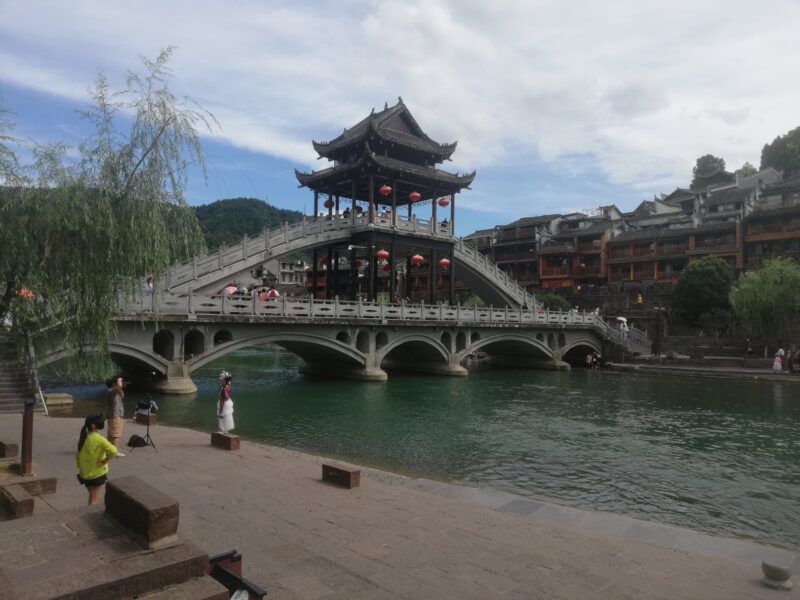We got to the bus station for the 8.50 bus to Fenghuang at about 8.10 and were immediately shepherded onto a large taxi by a lady who, as at Yichang, appeared to be employed to get people on the right buses. The taxi drove at breakneck speed to Xiangxi, another huge city, where we were transferred onto a bus with dodgy suspension, and we bounced up and down (literally) all the way to Fenghuang.
Coming out of the bus station we were approached by a man who said he had a hotel and showed us a room which had no internet, a Chinese-squat toilet, no shower and a non-working cooler for £13. I went downstairs to complain and his wife, a very round and very jolly lady put us into a very nice room with internet (although very slow) and a cooler. There was a kettle but no cups and I had to go downstairs again to try and explain what a cup was and we wanted some. Eventually, they found us one cup and a tiny plastic thing, So we have to have coffee one at a time. However the room is large and comfortable and there is a Western-style bog and a shower with hot water. But no breakfast.
In the afternoon, we walked down to the river and followed it along as far as the Rainbow Bridge. Fenghuang is even more touristy than before and most shops are selling replicas of the national dress for this part of China, which is very beautiful but every young girl wants to buy one and get photographed in it. The only other establishments are virtually identical restaurants. However Fenghuang is beautiful and is said to be typical of a Chinese city of the 1920’s before Mao’s Red Guards smashed them up as part of his “Down with the old, in with the new” programme. Fenghuang survived because a famous prime minister, Chou En-Lai came from here.
